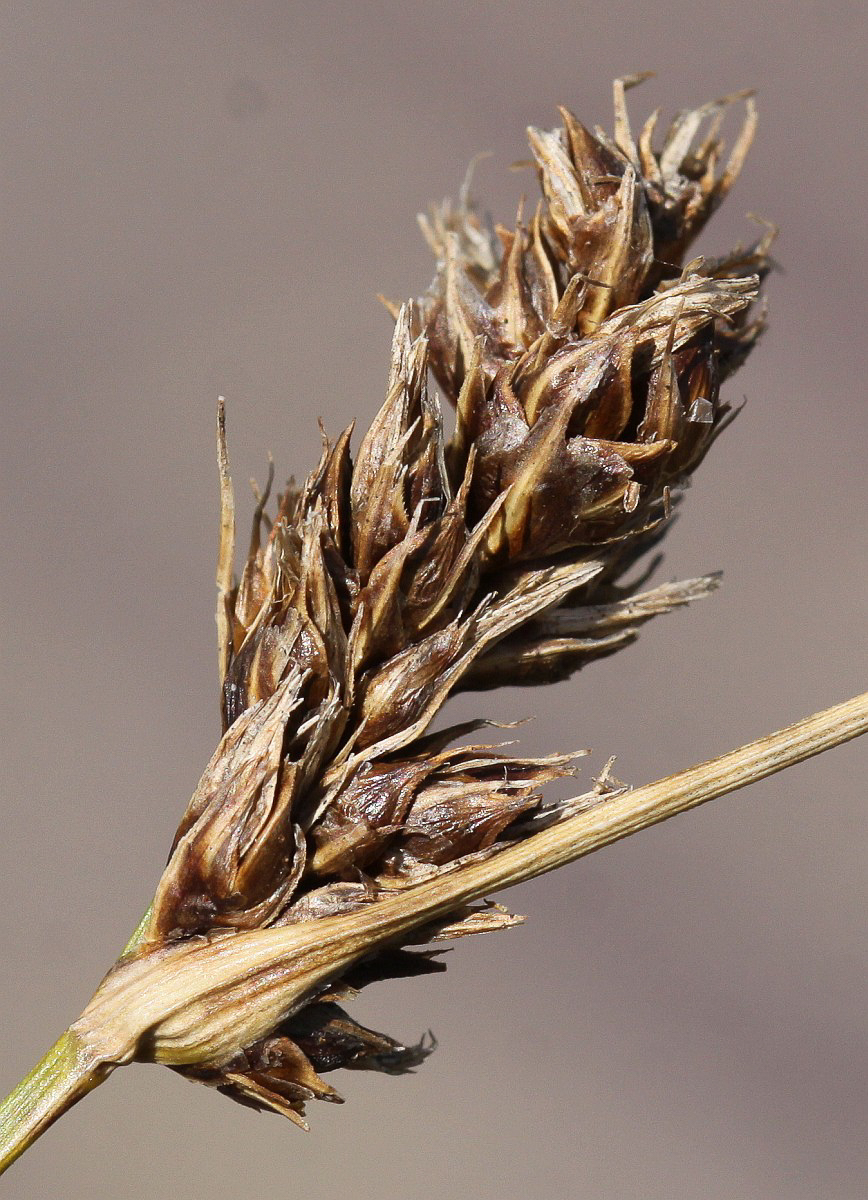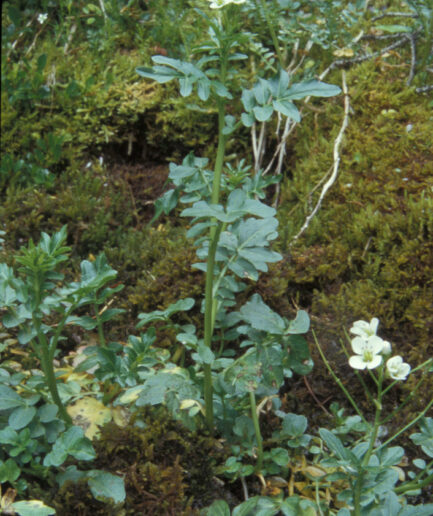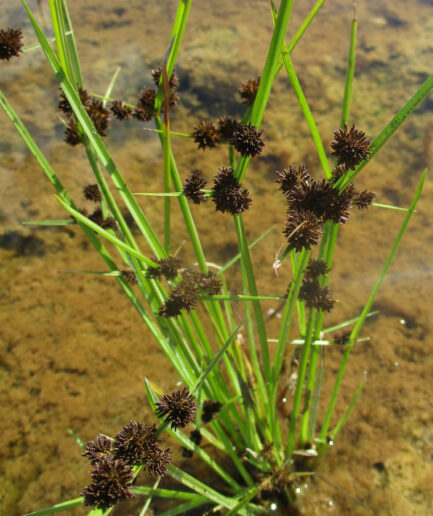Separated sedge
Scientific name: Carex divisa Huds.
Family: Cyperaceae
MORPHOLOGY
Habit and size: Perennial herbaceous plant, 10-80 cm tall, spreading horizontally with a long and thick rhizome (2 mm).
Stem: Triangular stem, erect, smooth or scabrous above, long naked and generally longer than the leaves.
Leaves: Flat, sometimes convolute leaves, 1.5-3 mm wide, rough at the margins, shorter than the stem.
Flowers: Short inflorescence in a compact spike, 1-2 (3) cm long, reddish formed by 3-8 spikes. Spikes contiguous, androgynous, 3-13 mm long, with male flowers at the top and female flowers at the bottom; often the lower spikes of the entire inflorescence are entirely female. Glumes of male flowers 3.5-4.5 mm long, lanceolate-elliptic, light reddish-brown, with acute apex; female glumes 3.5-5 mm long, oval, reddish-brown, without scarious margin, larger or slightly smaller than the utricle, with aristate or mucronate apex, rarely acute. Blooms between March and June.
Fruits and seeds: The fruits are oval-shaped pseudanthia (utricle), 3.5-4 x 1.6-1.8 mm, flat-convex, with abundant spongy tissue surrounding the base of the achene, weakly veined, with winged edges, greenish or brownish, with a beak of 0.7-1.1 mm, rough, bifid or truncate. Achenes 1.5-2 x 1-1.7 mm, obovate or elliptical, flat-convex, with persistent stylar base.
DISTRIBUTION AND HABITAT
Present throughout Italy except in the Aosta Valley, in wet meadows also on saline soils, pond edges, between 0 and 500 m.
Photo: under free license from Saxifraga and Ed Stikvoort, Peter Meininger, Jasenka Topic





















